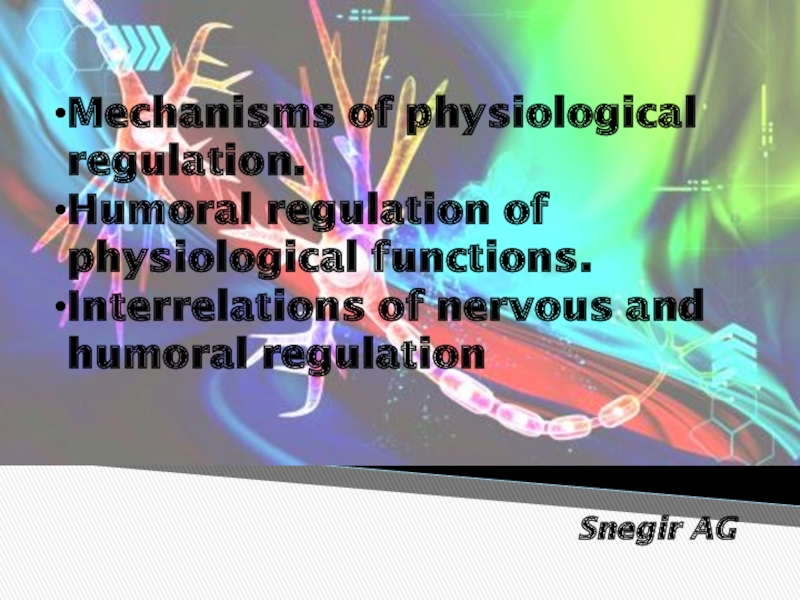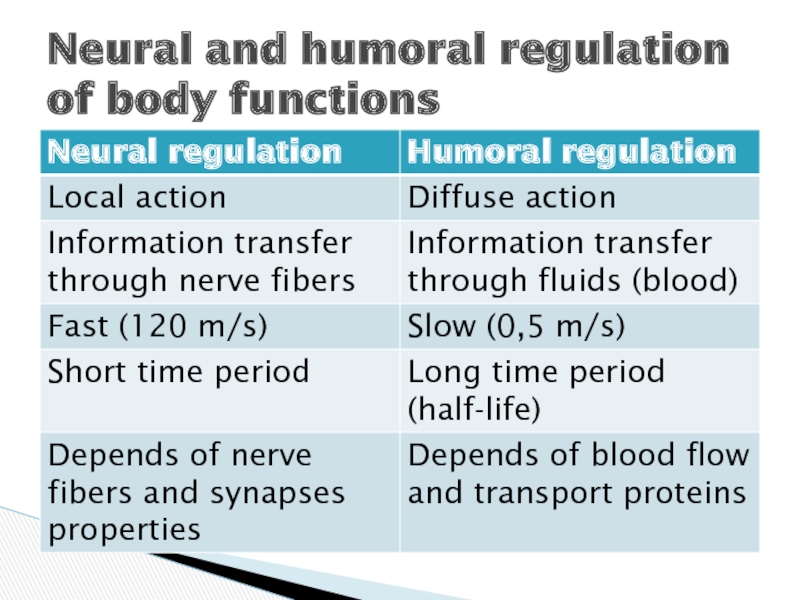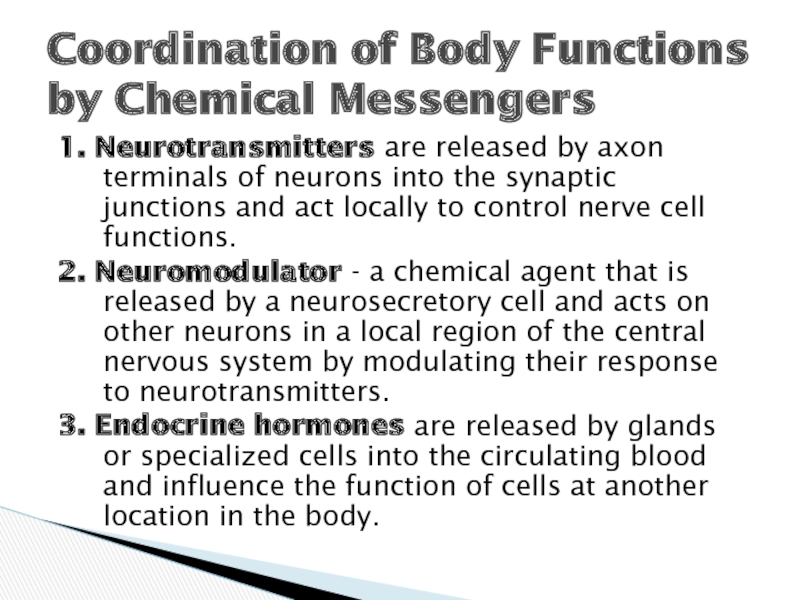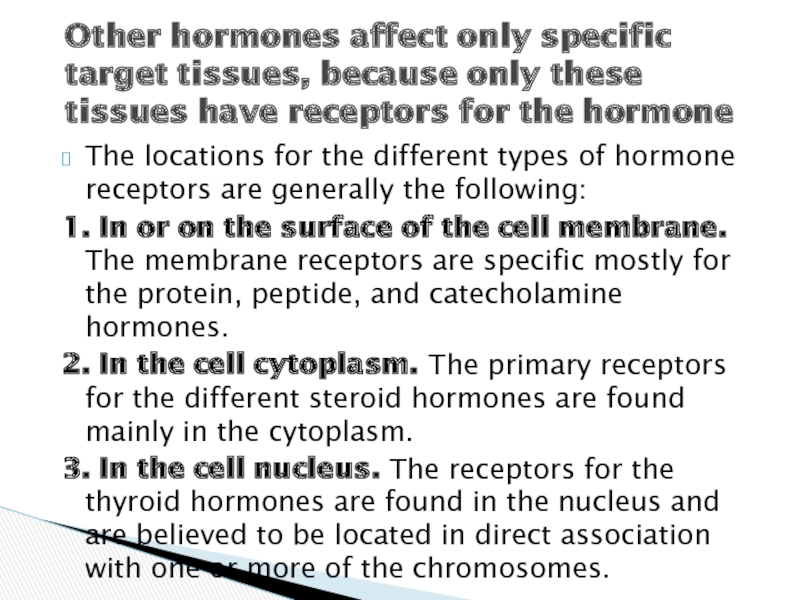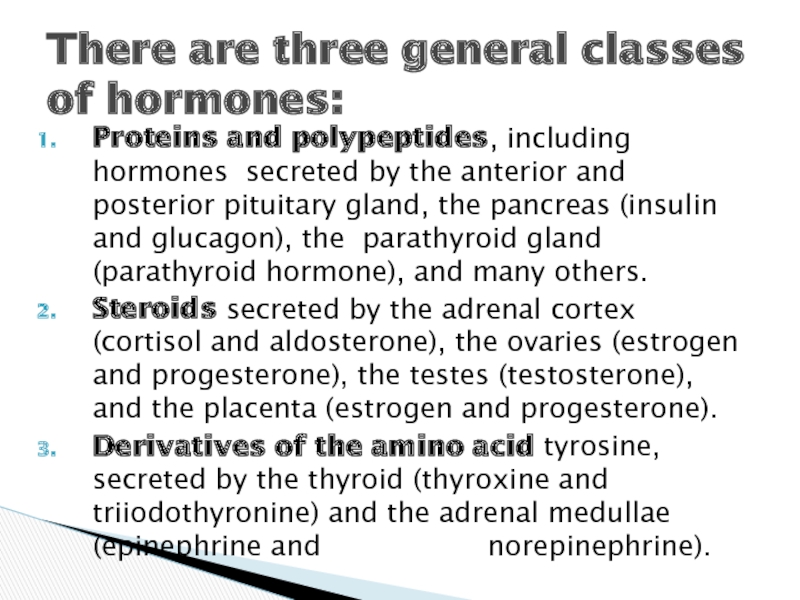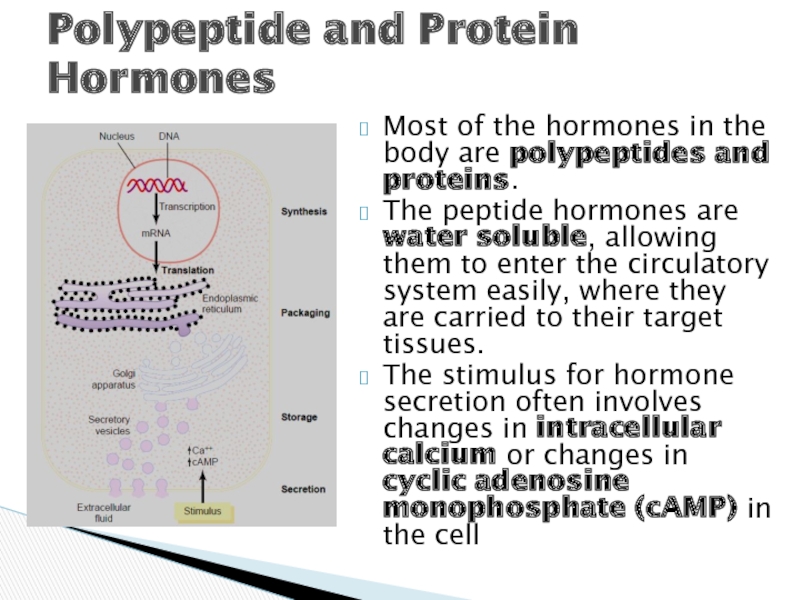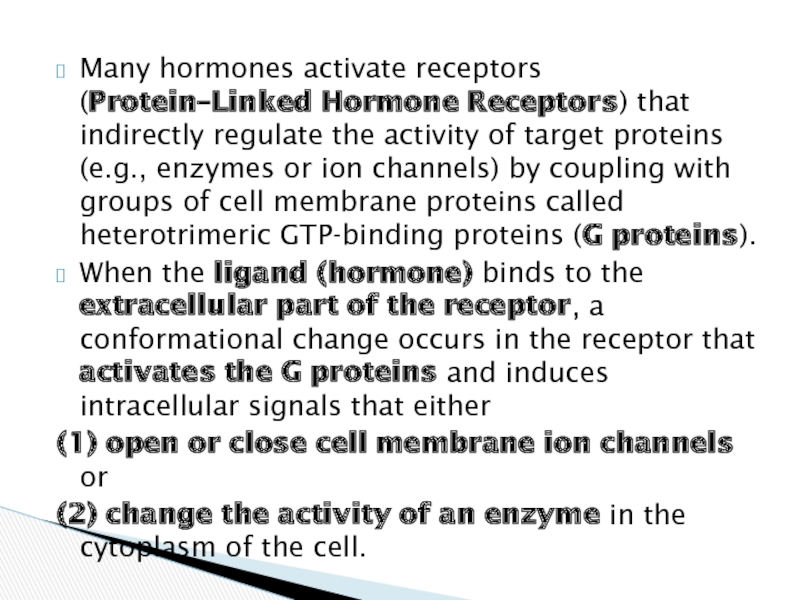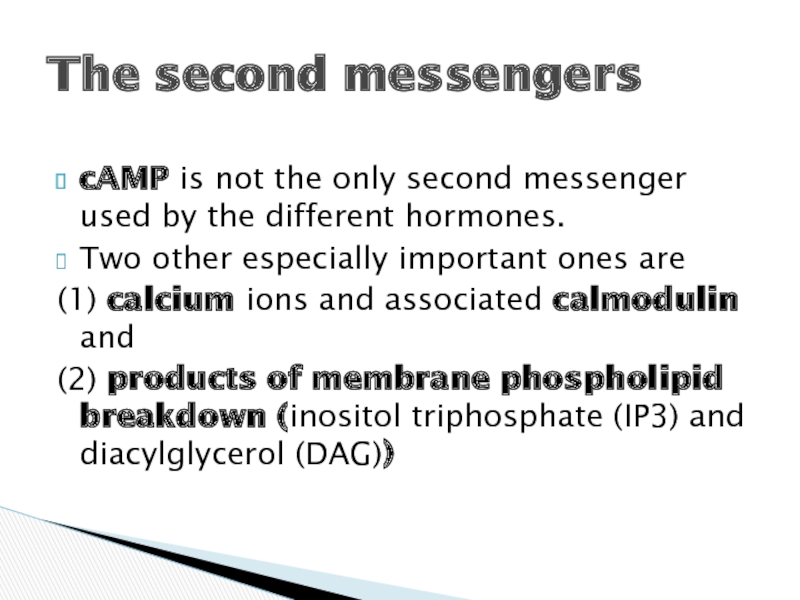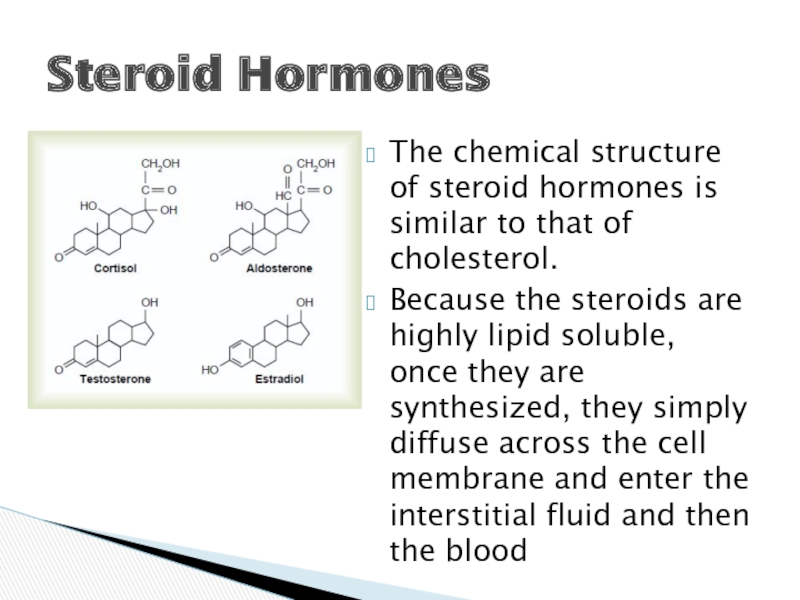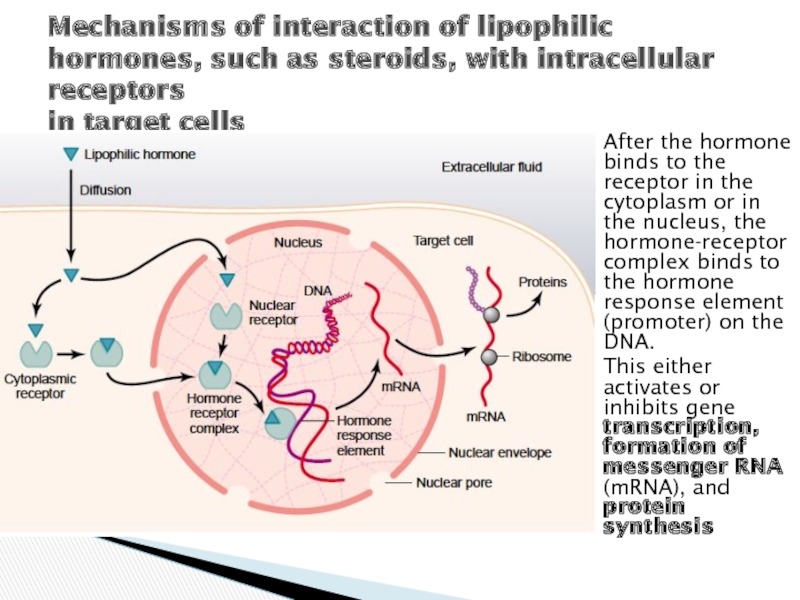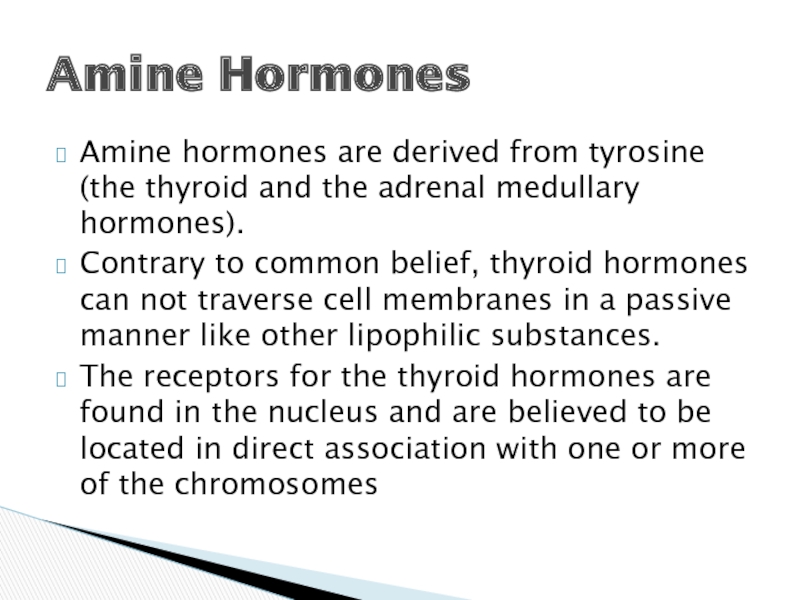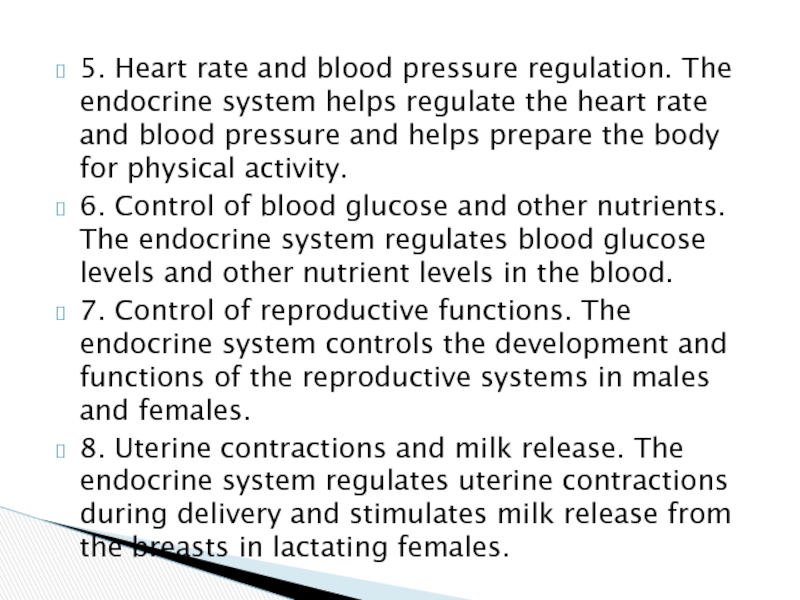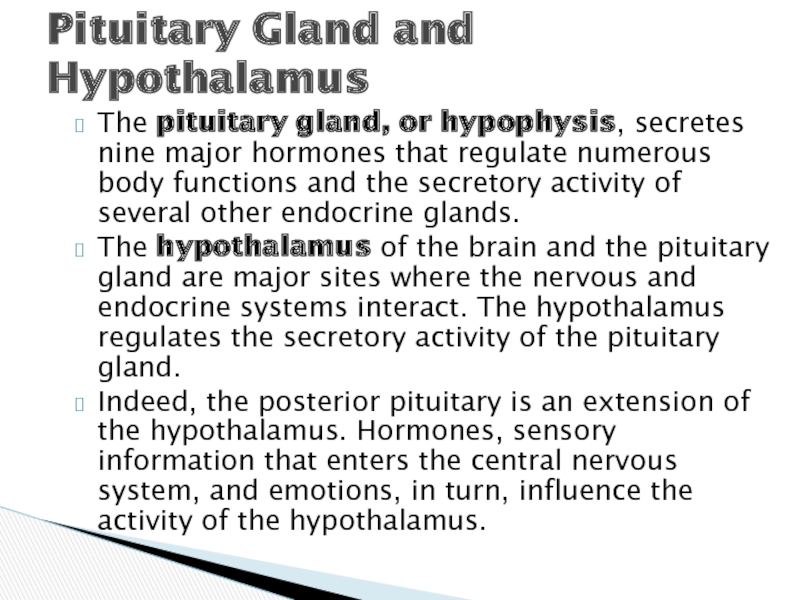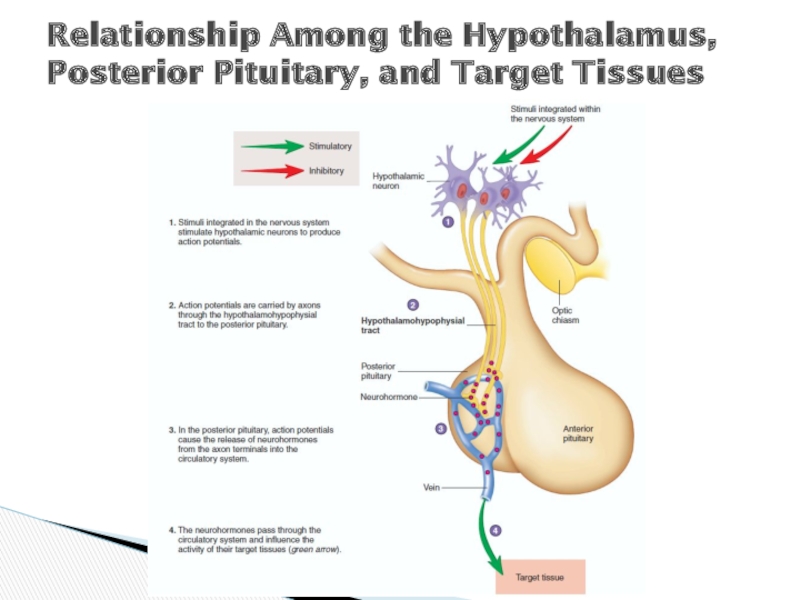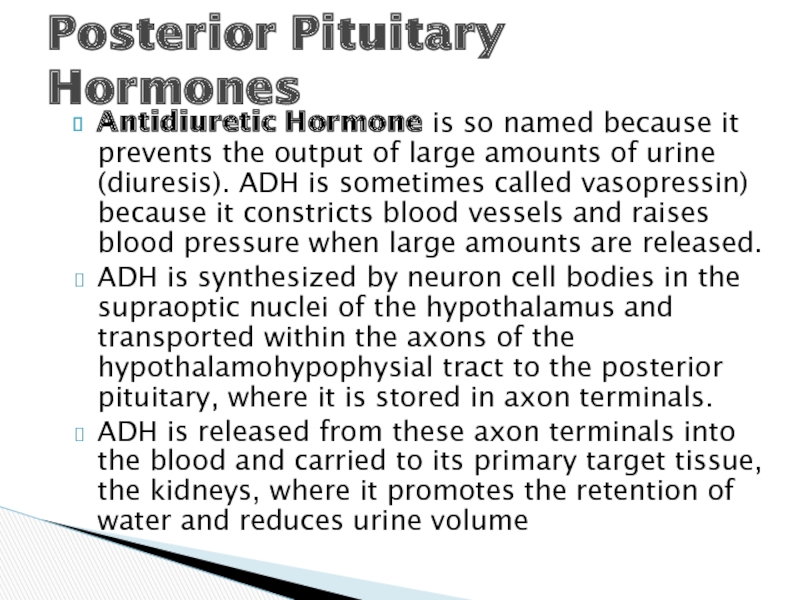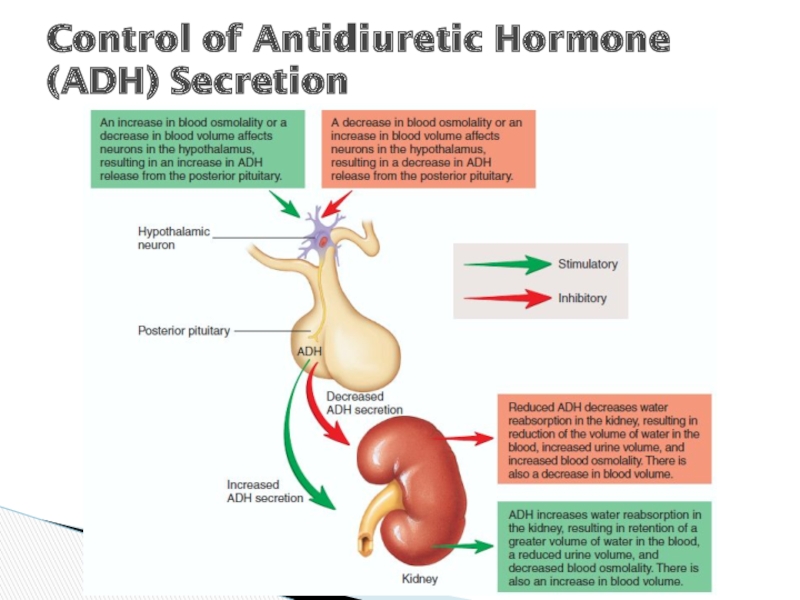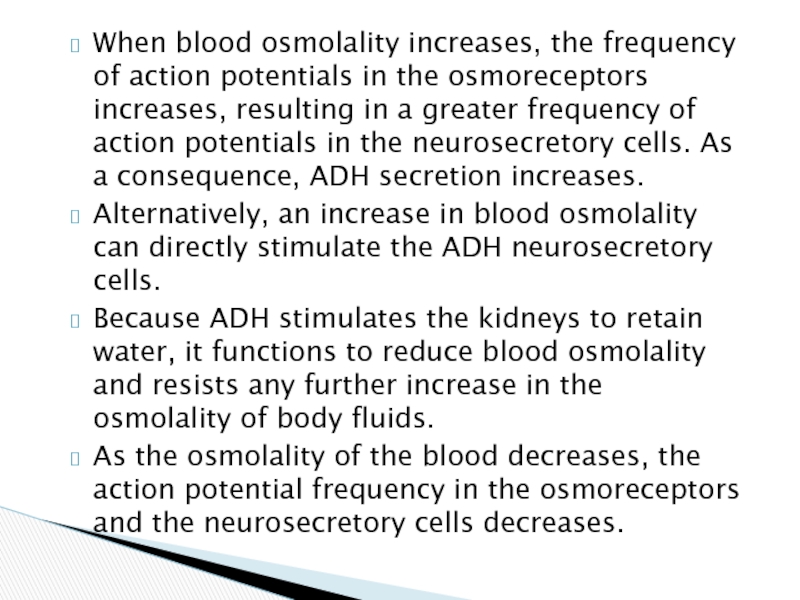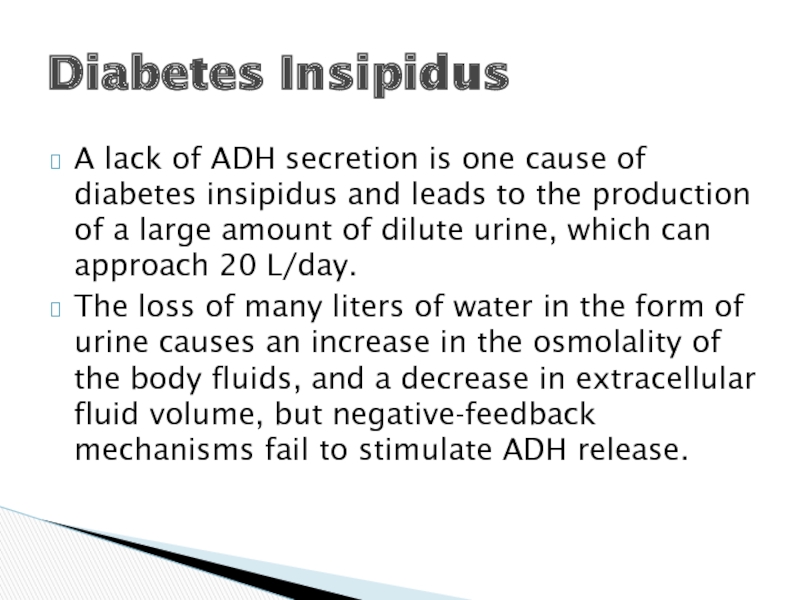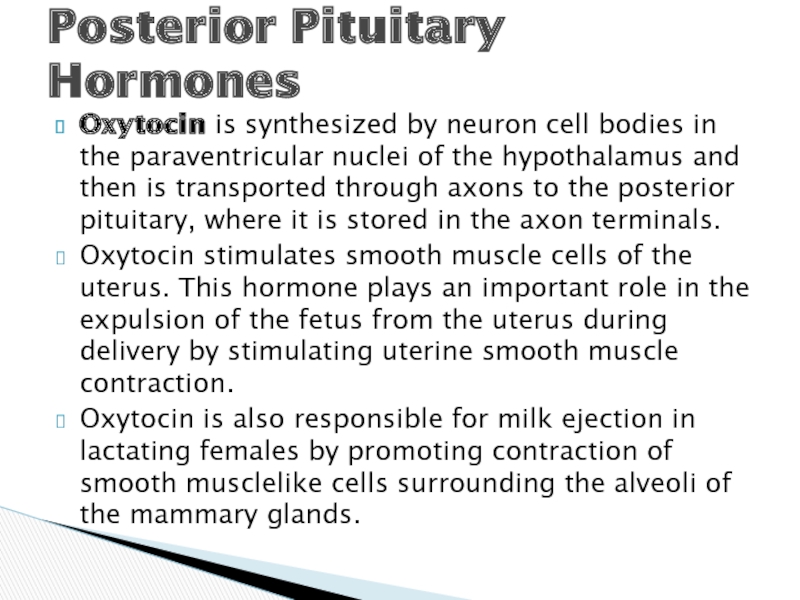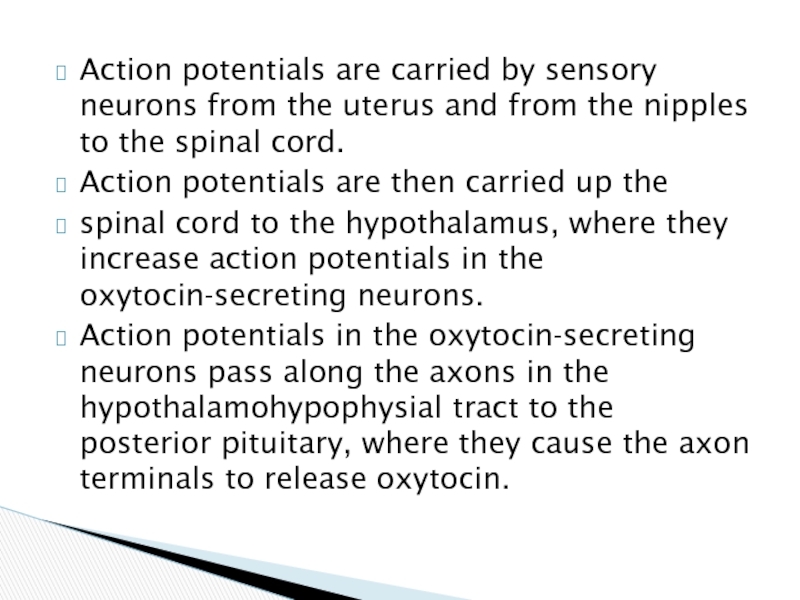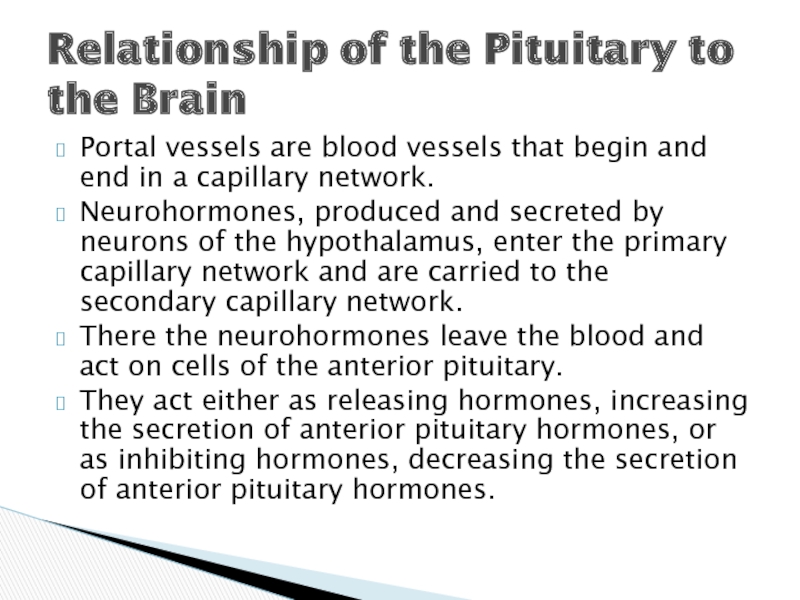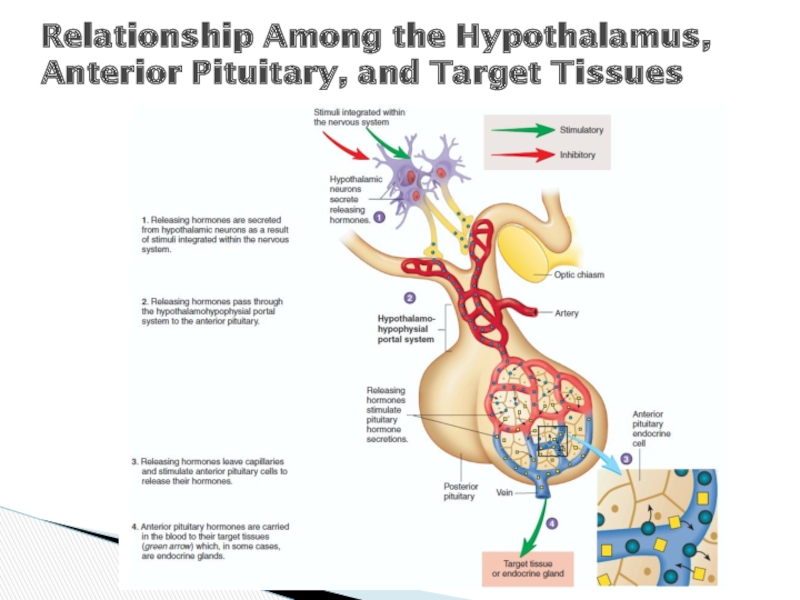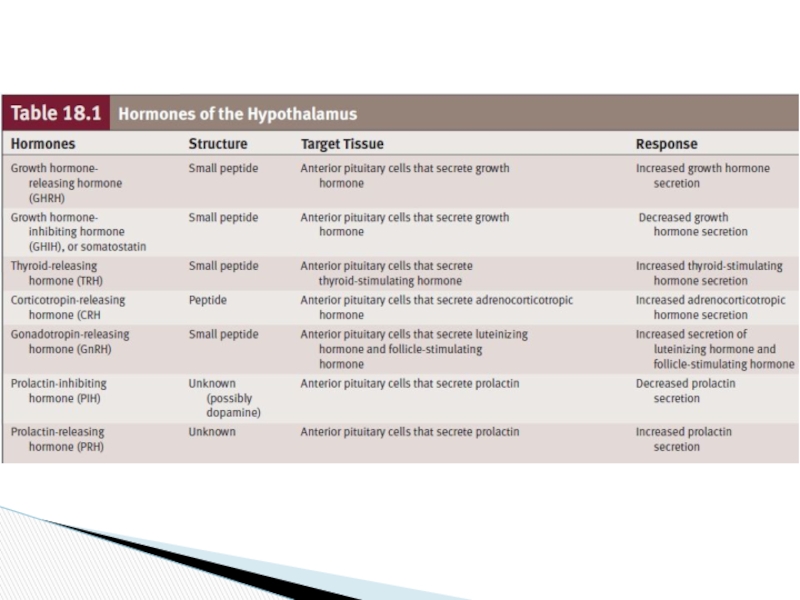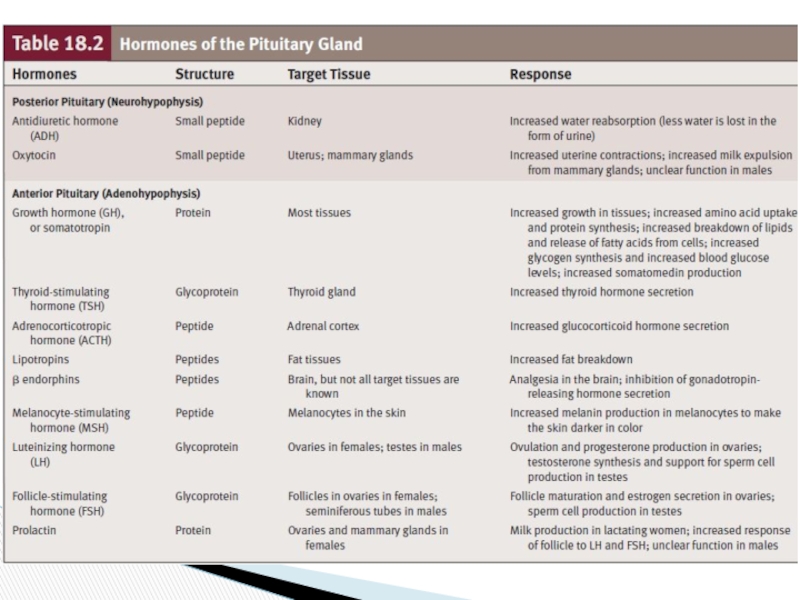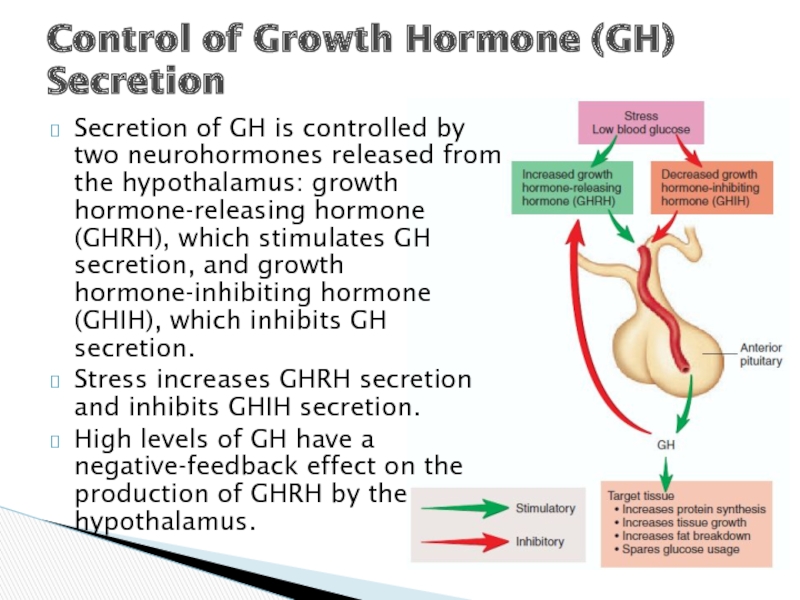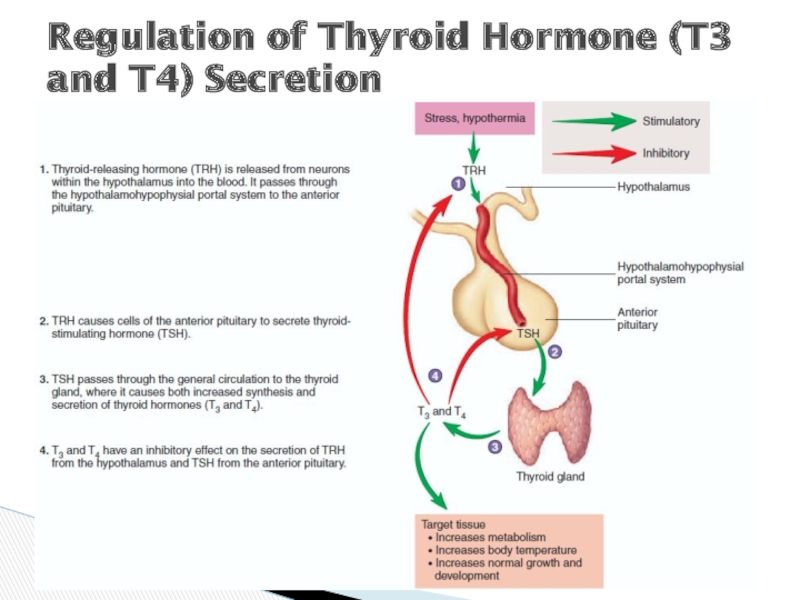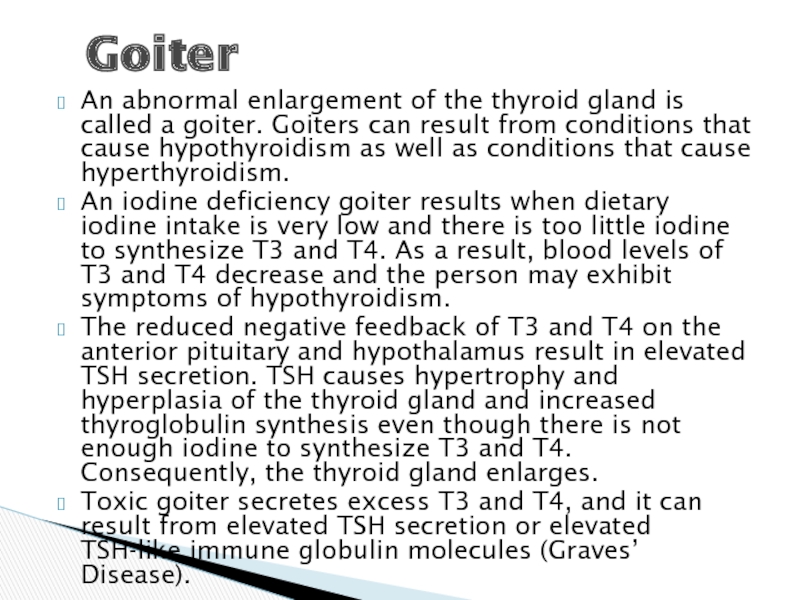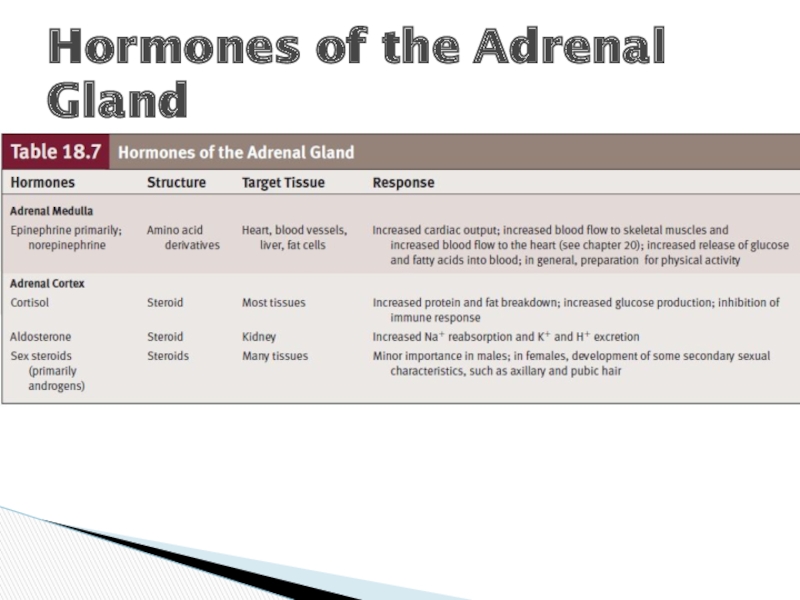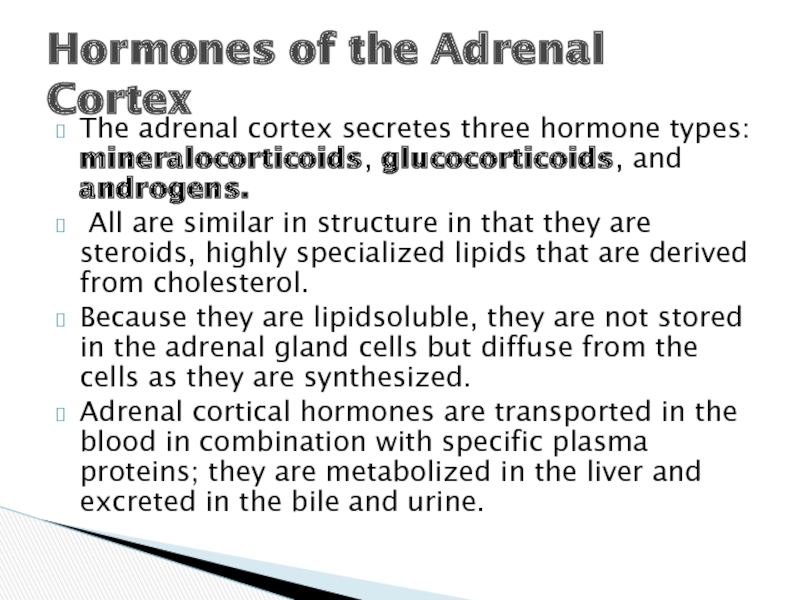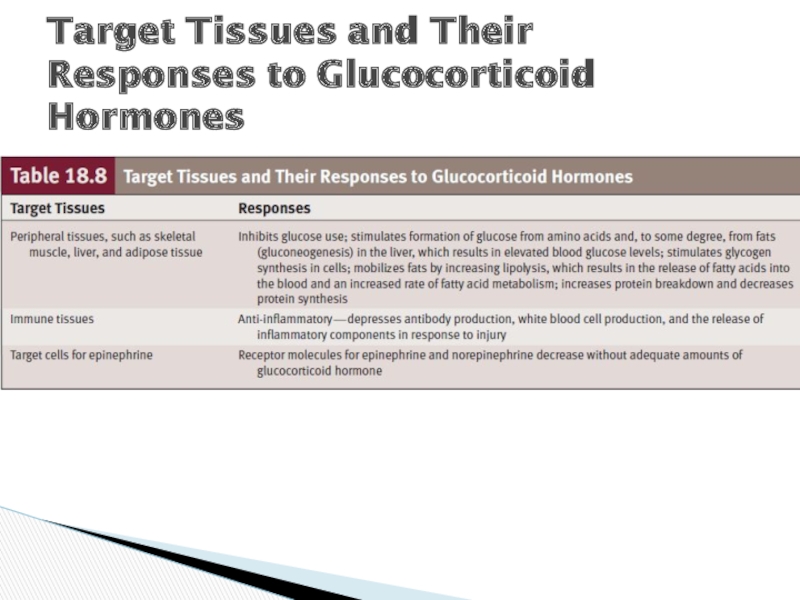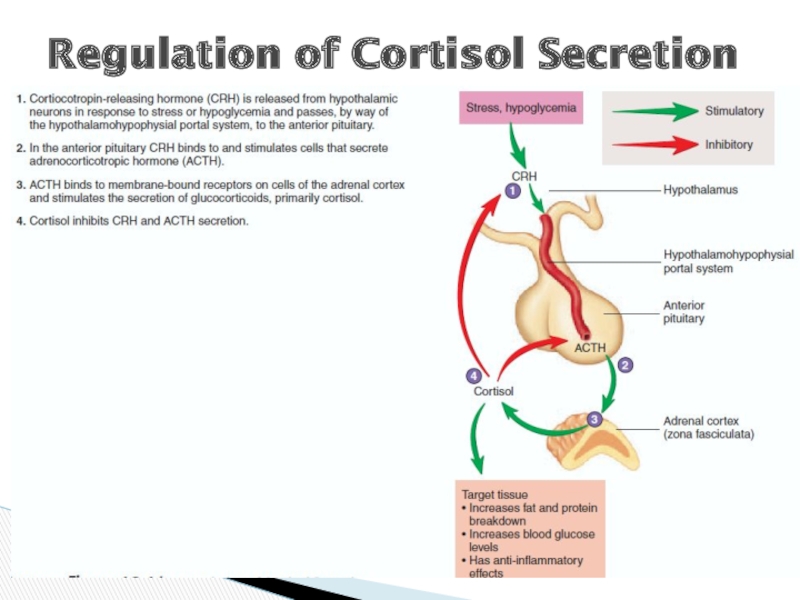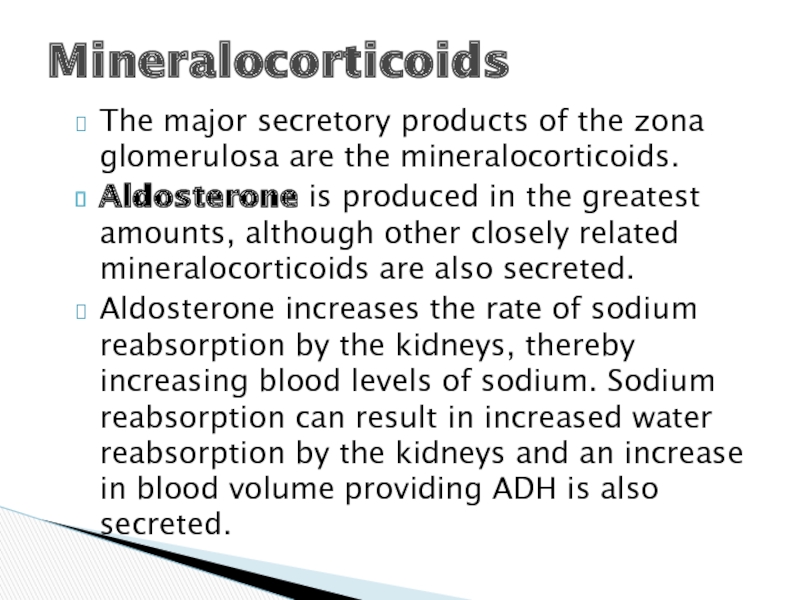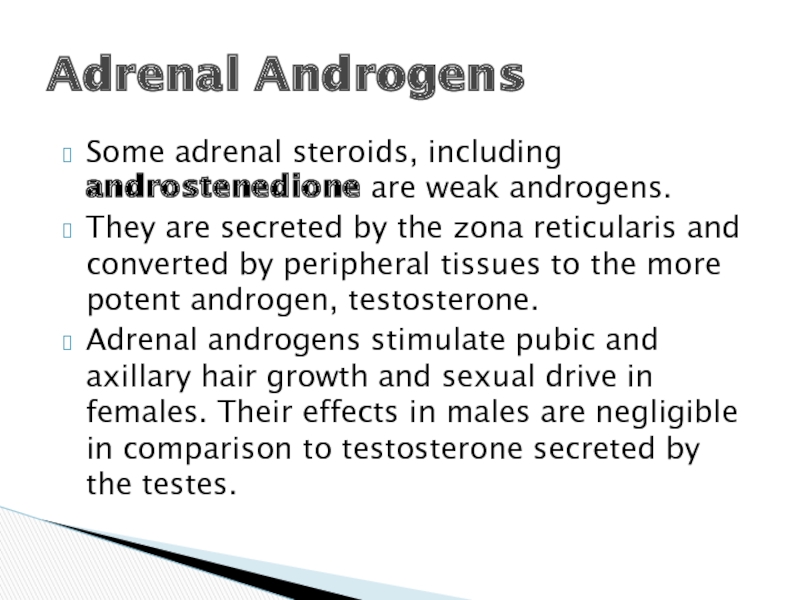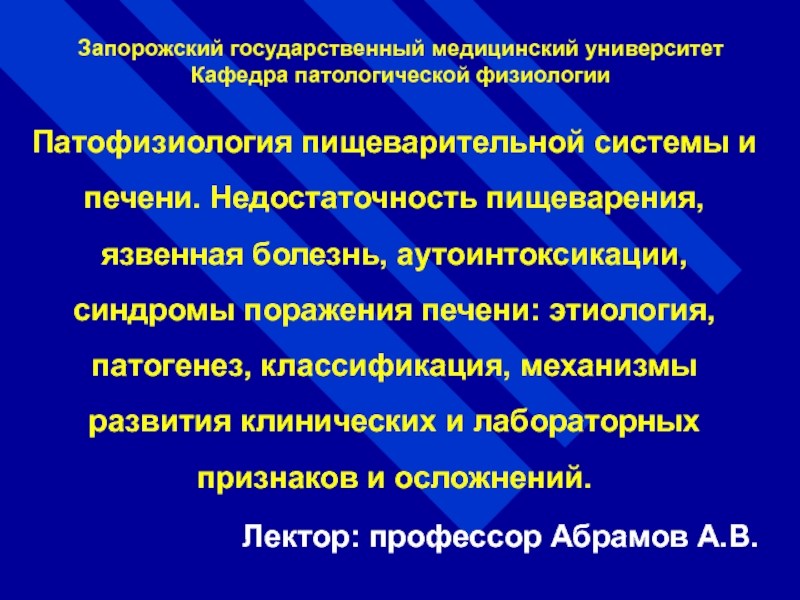- Главная
- Разное
- Дизайн
- Бизнес и предпринимательство
- Аналитика
- Образование
- Развлечения
- Красота и здоровье
- Финансы
- Государство
- Путешествия
- Спорт
- Недвижимость
- Армия
- Графика
- Культурология
- Еда и кулинария
- Лингвистика
- Английский язык
- Астрономия
- Алгебра
- Биология
- География
- Детские презентации
- Информатика
- История
- Литература
- Маркетинг
- Математика
- Медицина
- Менеджмент
- Музыка
- МХК
- Немецкий язык
- ОБЖ
- Обществознание
- Окружающий мир
- Педагогика
- Русский язык
- Технология
- Физика
- Философия
- Химия
- Шаблоны, картинки для презентаций
- Экология
- Экономика
- Юриспруденция
The hormonal regulation of the body презентация
Содержание
- 1. The hormonal regulation of the body
- 2. Neural and humoral regulation of body functions
- 3. 1. Neurotransmitters are released by axon terminals
- 4. 4. Neuroendocrine hormones are secreted by neurons
- 5. Endocrine hormones are released by glands or
- 6. The locations for the different types of
- 7. Proteins and polypeptides, including hormones secreted by
- 8. Most of the hormones in the body
- 9. Cyclic adenosine monophosphate (cAMP) mechanism by which
- 10. Many hormones activate receptors (Protein–Linked Hormone Receptors)
- 11. cAMP is not the only second messenger
- 12. Enzyme-linked receptors have their hormone-binding site on
- 13. The chemical structure of steroid hormones is
- 14. After the hormone binds to the receptor
- 15. 1. The steroid hormone diffuses across the
- 16. Amine hormones are derived from tyrosine (the
- 17. 1. Metabolism and tissue maturation. The endocrine
- 18. 5. Heart rate and blood pressure regulation.
- 19. The pituitary gland, or hypophysis, secretes nine
- 20. Relationship Among the Hypothalamus, Posterior Pituitary, and Target Tissues
- 21. Antidiuretic Hormone is so named because it
- 22. Control of Antidiuretic Hormone (ADH) Secretion
- 23. When blood osmolality increases, the frequency of
- 24. A lack of ADH secretion is one
- 25. Oxytocin is synthesized by neuron cell bodies
- 26. Action potentials are carried by sensory neurons
- 27. Portal vessels are blood vessels that begin
- 28. Relationship Among the Hypothalamus, Anterior Pituitary, and Target Tissues
- 31. Control of Growth Hormone (GH) Secretion Secretion
- 32. Chronic hyposecretion of GH in infants and
- 33. Regulation of Thyroid Hormone (T3 and T4) Secretion
- 34. An abnormal enlargement of the thyroid gland
- 35. Hormones of the Adrenal Gland
- 36. Regulation of Adrenal Medullary Secretions
- 37. The adrenal cortex secretes three hormone types:
- 38. Target Tissues and Their Responses to Glucocorticoid Hormones
- 39. Regulation of Cortisol Secretion
- 40. The major secretory products of the zona
- 41. Aldosterone increases K excretion into the urine
- 42. Symptoms of Hyposecretion and Hypersecretion of Adrenal Cortex Hormones
- 43. Some adrenal steroids, including androstenedione are weak
Слайд 1Snegir AG
Mechanisms of physiological regulation.
Humoral regulation of physiological functions.
Interrelations
Слайд 31. Neurotransmitters are released by axon terminals of neurons into the
2. Neuromodulator - a chemical agent that is released by a neurosecretory cell and acts on other neurons in a local region of the central nervous system by modulating their response to neurotransmitters.
3. Endocrine hormones are released by glands or specialized cells into the circulating blood and influence the function of cells at another location in the body.
Coordination of Body Functions by Chemical Messengers
Слайд 44. Neuroendocrine hormones are secreted by neurons into the circulating blood
5.Tissue hormones are hormones synthesized by cells other than those in the endocrine system (prostaglandins).
6.Cytokines are peptides secreted by cells into the extracellular fluid and can function as autocrines, paracrines, or endocrine hormones. Examples of cytokines include the interleukins and other lymphokines that are secreted by helper cells and act on other cells of the immune system.
7. Metabolites (CO2, NO)
Слайд 5Endocrine hormones are released by glands or specialized cells into the
Neuroendocrine hormones are secreted by neurons into the circulating blood and influence the function of cells at another location in the body.
Paracrines are secreted by cells into the extracellular fluid and affect neighboring cells of a different type.
Autocrines are secreted by cells into the extracellular fluid and affect the function of the same cells that produced them by binding to cell surface receptors
The action of humoral factors
Слайд 6The locations for the different types of hormone receptors are generally
1. In or on the surface of the cell membrane. The membrane receptors are specific mostly for the protein, peptide, and catecholamine hormones.
2. In the cell cytoplasm. The primary receptors for the different steroid hormones are found mainly in the cytoplasm.
3. In the cell nucleus. The receptors for the thyroid hormones are found in the nucleus and are believed to be located in direct association with one or more of the chromosomes.
Other hormones affect only specific target tissues, because only these tissues have receptors for the hormone
Слайд 7Proteins and polypeptides, including hormones secreted by the anterior and posterior
Steroids secreted by the adrenal cortex (cortisol and aldosterone), the ovaries (estrogen and progesterone), the testes (testosterone), and the placenta (estrogen and progesterone).
Derivatives of the amino acid tyrosine, secreted by the thyroid (thyroxine and triiodothyronine) and the adrenal medullae (epinephrine and norepinephrine).
There are three general classes of hormones:
Слайд 8Most of the hormones in the body are polypeptides and proteins.
The
The stimulus for hormone secretion often involves changes in intracellular calcium or changes in cyclic adenosine monophosphate (cAMP) in the cell
Polypeptide and Protein Hormones
Слайд 9Cyclic adenosine monophosphate (cAMP) mechanism by which many hormones exert their
ADP, adenosine diphosphate;
ATP, adenosine triphosphate
Adenylyl Cyclase–cAMP Second
Messenger System
Слайд 10Many hormones activate receptors (Protein–Linked Hormone Receptors) that indirectly regulate the
When the ligand (hormone) binds to the extracellular part of the receptor, a conformational change occurs in the receptor that activates the G proteins and induces intracellular signals that either
(1) open or close cell membrane ion channels or
(2) change the activity of an enzyme in the cytoplasm of the cell.
Слайд 11cAMP is not the only second messenger used by the different
Two other especially important ones are
(1) calcium ions and associated calmodulin and
(2) products of membrane phospholipid breakdown (inositol triphosphate (IP3) and diacylglycerol (DAG))
The second messengers
Слайд 12Enzyme-linked receptors have their hormone-binding site on the outside of the
When the hormone binds to the extracellular part of the receptor, an enzyme immediately inside the cell membrane is activated (or occasionally inactivated).
Although many enzyme-linked receptors have intrinsic enzyme activity, others rely on enzymes that are closely associated with the receptor to produce changes in cell function.
Слайд 13The chemical structure of steroid hormones is similar to that of
Because the steroids are highly lipid soluble, once they are synthesized, they simply diffuse across the cell membrane and enter the interstitial fluid and then the blood
Steroid Hormones
Слайд 14After the hormone binds to the receptor in the cytoplasm or
This either activates or inhibits gene transcription, formation of messenger RNA (mRNA), and protein synthesis
Mechanisms of interaction of lipophilic hormones, such as steroids, with intracellular receptors
in target cells
Слайд 151. The steroid hormone diffuses across the cell membrane and enters
2. The combined receptor protein–hormone then diffuses into or is transported into the nucleus.
3. The combination binds at specific points on the DNA strands in the chromosomes, which activatesthe transcription process of specific genes to form mRNA.
4. The mRNA diffuses into the cytoplasm, where it promotes the translation process at the ribosomesto form new proteins
Слайд 16Amine hormones are derived from tyrosine (the thyroid and the adrenal
Contrary to common belief, thyroid hormones can not traverse cell membranes in a passive manner like other lipophilic substances.
The receptors for the thyroid hormones are found in the nucleus and are believed to be located in direct association with one or more of the chromosomes
Amine Hormones
Слайд 171. Metabolism and tissue maturation. The endocrine system regulates the rate
2. Ion regulation. The endocrine system helps regulate blood pH as well as Na+, K+, and Ca2+ concentrations in the blood.
3. Water balance. The endocrine system regulates water balance by controlling the solute concentration of the blood.
4. Immune system regulation. The endocrine system helps control the production of immune cells.
The main regulatory functions of the endocrine system include:
Слайд 185. Heart rate and blood pressure regulation. The endocrine system helps
6. Control of blood glucose and other nutrients. The endocrine system regulates blood glucose levels and other nutrient levels in the blood.
7. Control of reproductive functions. The endocrine system controls the development and functions of the reproductive systems in males and females.
8. Uterine contractions and milk release. The endocrine system regulates uterine contractions during delivery and stimulates milk release from the breasts in lactating females.
Слайд 19The pituitary gland, or hypophysis, secretes nine major hormones that regulate
The hypothalamus of the brain and the pituitary gland are major sites where the nervous and endocrine systems interact. The hypothalamus regulates the secretory activity of the pituitary gland.
Indeed, the posterior pituitary is an extension of the hypothalamus. Hormones, sensory information that enters the central nervous system, and emotions, in turn, influence the activity of the hypothalamus.
Pituitary Gland and Hypothalamus
Слайд 21Antidiuretic Hormone is so named because it prevents the output of
ADH is synthesized by neuron cell bodies in the supraoptic nuclei of the hypothalamus and transported within the axons of the hypothalamohypophysial tract to the posterior pituitary, where it is stored in axon terminals.
ADH is released from these axon terminals into the blood and carried to its primary target tissue, the kidneys, where it promotes the retention of water and reduces urine volume
Posterior Pituitary Hormones
Слайд 23When blood osmolality increases, the frequency of action potentials in the
Alternatively, an increase in blood osmolality can directly stimulate the ADH neurosecretory cells.
Because ADH stimulates the kidneys to retain water, it functions to reduce blood osmolality and resists any further increase in the osmolality of body fluids.
As the osmolality of the blood decreases, the action potential frequency in the osmoreceptors and the neurosecretory cells decreases.
Слайд 24A lack of ADH secretion is one cause of diabetes insipidus
The loss of many liters of water in the form of urine causes an increase in the osmolality of the body fluids, and a decrease in extracellular fluid volume, but negative-feedback mechanisms fail to stimulate ADH release.
Diabetes Insipidus
Слайд 25Oxytocin is synthesized by neuron cell bodies in the paraventricular nuclei
Oxytocin stimulates smooth muscle cells of the uterus. This hormone plays an important role in the expulsion of the fetus from the uterus during delivery by stimulating uterine smooth muscle contraction.
Oxytocin is also responsible for milk ejection in lactating females by promoting contraction of smooth musclelike cells surrounding the alveoli of the mammary glands.
Posterior Pituitary Hormones
Слайд 26Action potentials are carried by sensory neurons from the uterus and
Action potentials are then carried up the
spinal cord to the hypothalamus, where they increase action potentials in the oxytocin-secreting neurons.
Action potentials in the oxytocin-secreting neurons pass along the axons in the hypothalamohypophysial tract to the posterior pituitary, where they cause the axon terminals to release oxytocin.
Слайд 27Portal vessels are blood vessels that begin and end in a
Neurohormones, produced and secreted by neurons of the hypothalamus, enter the primary capillary network and are carried to the secondary capillary network.
There the neurohormones leave the blood and act on cells of the anterior pituitary.
They act either as releasing hormones, increasing the secretion of anterior pituitary hormones, or as inhibiting hormones, decreasing the secretion of anterior pituitary hormones.
Relationship of the Pituitary to the Brain
Слайд 31Control of Growth Hormone (GH) Secretion
Secretion of GH is controlled by
Stress increases GHRH secretion and inhibits GHIH secretion.
High levels of GH have a negative-feedback effect on the production of GHRH by the hypothalamus.
Слайд 32Chronic hyposecretion of GH in infants and children leads to dwarfism,
Chronic hypersecretion of GH leads to giantism or acromegaly, depending on whether the hypersecretion occurs before or after complete ossification of the epiphysial plates in the skeletal system.
Chronic hypersecretion of GH before the epiphysial plates have ossified causes exaggerated and prolonged growth in long bones, resulting in giantism. Some individuals thus affected have grown to be 8 feet tall or more.
Слайд 34An abnormal enlargement of the thyroid gland is called a goiter.
An iodine deficiency goiter results when dietary iodine intake is very low and there is too little iodine to synthesize T3 and T4. As a result, blood levels of T3 and T4 decrease and the person may exhibit symptoms of hypothyroidism.
The reduced negative feedback of T3 and T4 on the anterior pituitary and hypothalamus result in elevated TSH secretion. TSH causes hypertrophy and hyperplasia of the thyroid gland and increased thyroglobulin synthesis even though there is not enough iodine to synthesize T3 and T4. Consequently, the thyroid gland enlarges.
Toxic goiter secretes excess T3 and T4, and it can result from elevated TSH secretion or elevated TSH-like immune globulin molecules (Graves’ Disease).
Goiter
Слайд 37The adrenal cortex secretes three hormone types: mineralocorticoids, glucocorticoids, and androgens.
Because they are lipidsoluble, they are not stored in the adrenal gland cells but diffuse from the cells as they are synthesized.
Adrenal cortical hormones are transported in the blood in combination with specific plasma proteins; they are metabolized in the liver and excreted in the bile and urine.
Hormones of the Adrenal Cortex
Слайд 40The major secretory products of the zona glomerulosa are the mineralocorticoids.
Aldosterone is produced in the greatest amounts, although other closely related mineralocorticoids are also secreted.
Aldosterone increases the rate of sodium reabsorption by the kidneys, thereby increasing blood levels of sodium. Sodium reabsorption can result in increased water reabsorption by the kidneys and an increase in blood volume providing ADH is also secreted.
Mineralocorticoids
Слайд 41Aldosterone increases K excretion into the urine by the kidneys, thereby
When aldosterone is secreted in high concentrations, it can result in reduced blood levels of K and alkalosis (elevated pH of body fluids).
Слайд 43Some adrenal steroids, including androstenedione are weak androgens.
They are secreted
Adrenal androgens stimulate pubic and axillary hair growth and sexual drive in females. Their effects in males are negligible in comparison to testosterone secreted by the testes.
Adrenal Androgens
